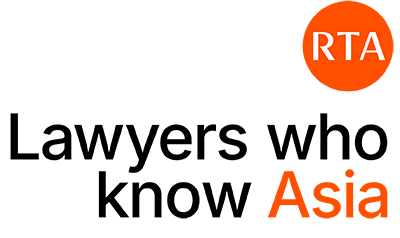On 1 September 2025, the Ministry of Law (“MinLaw“) issued the “Public Consultation on Guide for Using Generative Artificial Intelligence in the Legal Sector” (“Consultation“) to seek feedback from legal professionals and the public on a proposed “Guide for Using Generative AI in the Legal Sector” (“Guide“). The Consultation closed on 30 September 2025.
The Guide outlines key principles and offers practical guidance to support the responsible, safe, ethical, and effective use and adoption of Generative Artificial Intelligence (“Gen AI“) tools in Singapore’s legal sector in line with its high standards of professional conduct. It complements existing frameworks such as the Infocomm Media Development Authority’s “Model AI Governance Framework for Generative AI” and the Supreme Court’s “Guide on the Use of Generative Artificial Intelligence Tools by Court Users“. Key aspects of the Guide are:
- examples of use cases;
- key principles to be observed when using Gen AI in legal work; and
- a recommended framework for implementing Gen AI in legal practice.
Rajah & Tann Singapore (“R&T Singapore“) is proud to have contributed to the development of the Guide.
Background: Benefits and Risks of Gen AI
Gen AI offers significant benefits to legal professionals, potentially enabling them to improve efficiency, productivity and service delivery. Firms have reported productivity gains in areas such as legal research, document drafting, document review and analysis, and practice management. In a 19 September 2025 CNA article titled “Some law firms using AI for drafting and other legal work, but human lawyers still sign off“, six law firms – including R&T Singapore – shared how they were employing Gen AI tools to augment their service delivery while maintaining human oversight.
However, the use of Gen AI carries risks such as hallucinations (coherent text that appears persuasive but may be inaccurate or fabricated), concerns about client confidentiality, citations of non-existent or superseded legal authorities, and more. If improperly managed, these issues can give rise to personal liability – in Tajudin bin Gulam Rasul and another v Suriaya bte Haja Mohideen [2025] SGHCR 33, the High Court ordered the claimants’ counsel to pay costs personally to the counterparty for citing a fictitious AI-generated authority without first verifying its existence and accuracy.
To address these issues, and the accompanying hesitation to adopt Gen AI solutions, MinLaw has developed the Guide to empower legal professionals to effectively harness Gen AI while maintaining their professional obligations in their delivery of legal services.
Use Cases
The Guide identifies use cases in the legal sector, highlighting (i) common methods of application; (ii) examples of applicable AI tools; and (iii) key considerations and practical safeguards against risks. Use cases include:
- practice management;
- legal research;
- document review;
- contract analysis and review; and
- document drafting.
Key Principles
The Guide sets out three key principles to be observed when using Gen AI for legal work:
- Professional ethics: The responsibility for all work product remains with legal professionals, who must apply the requisite knowledge, skill and experience to provide competent advice and representation. Legal professionals should take especial care to scrutinise and verify all Gen AI output to avoid hallucinations in the final work product.
- Confidentiality: Reasonable steps should be taken to ensure client confidentiality is protected. Examples include reviewing terms of service, implementing data classification protocols, and checking whether input and output data is used for model training.
- Transparency: The use of Gen AI should be disclosed to clients if it reasonably affects the clients’ interest, in accordance with Rule 5 of the Professional Conduct Rules (PCR). The Guide highlights two situations: (i) where the use of Gen AI tools may materially impact the representation or the exercise of professional judgment; and (ii) where data handling practices of the Gen AI tool(s) may not align with client-specific preferences or data residency requirements. Legal professionals should consider providing clear explanations on the use of Gen AI in their practice and offer an opt-out option, among other matters.
Implementing Gen AI in Legal Practice
The Guide outlines a framework for the implementation of Gen AI, incorporating emerging practices and industry experiences. Legal professionals should consider the following steps:
- Develop an AI adoption framework, comprising both internal policies for staff and external policies to inform clients about the use of Gen AI by the firm.
- Diagnose and analyse needs by identifying where and how Gen AI can meaningfully enhance the firm’s practice.
- Identify and evaluate Gen AI tools, with particular focus on data security, competence, and vendor reliability, as well as client confidentiality.
- Implement and train in a structured manner that ensures effective adoption while maintaining professional standards.
- Continuously review and improve Gen AI implementation to ensure continued effectiveness and compliance with professional standards.
The Annex to the Guide provides further illustrations for each step of the process, including methods used by R&T Singapore. For instance, when identifying and evaluating Gen AI tools, R&T Singapore first identifies challenges to be addressed; conducts market research on available AI or Gen AI tools; then evaluates shortlisted tools against a checklist.
Concluding Remarks
The Consultation is part of MinLaw’s ongoing efforts to support the transformation and digitalisation of the legal sector, particularly with regard to the responsible use of Gen AI solutions in the legal sector. This effort complements MinLaw’s other legal technology-related initiatives, such as the Productivity Solutions Grant for the Legal Sector and the Legal Innovation and Future-Readiness Transformation pilot initiative. Launched in June 2025, these initiatives aim to support law firms in their digitalisation efforts.
The Consultation sought feedback on the clarity, practicality, and comprehensiveness of the Guide. In particular, it also sought responses on broadening the material in the Guide, such as additional considerations or safeguards and further areas of ambiguity or concerns regarding Gen AI use in the legal sector. As such, the final Guide may include more detail and practical tips for legal professionals.
Click on the following link for more information:
- MinLaw Press Release titled “MinLaw Seeks Feedback on Guide for Using Generative Artificial Intelligence in the Legal Sector” (available on the MinLaw website at www.mlaw.gov.sg)
Disclaimer
Rajah & Tann Asia is a network of member firms with local legal practices in Cambodia, Indonesia, Lao PDR, Malaysia, Myanmar, the Philippines, Singapore, Thailand and Vietnam. Our Asian network also includes our regional office in China as well as regional desks focused on Brunei, Japan and South Asia. Member firms are independently constituted and regulated in accordance with relevant local requirements.
The contents of this publication are owned by Rajah & Tann Asia together with each of its member firms and are subject to all relevant protection (including but not limited to copyright protection) under the laws of each of the countries where the member firm operates and, through international treaties, other countries. No part of this publication may be reproduced, licensed, sold, published, transmitted, modified, adapted, publicly displayed, broadcast (including storage in any medium by electronic means whether or not transiently for any purpose save as permitted herein) without the prior written permission of Rajah & Tann Asia or its respective member firms.
Please note also that whilst the information in this publication is correct to the best of our knowledge and belief at the time of writing, it is only intended to provide a general guide to the subject matter and should not be treated as legal advice or a substitute for specific professional advice for any particular course of action as such information may not suit your specific business and operational requirements. You should seek legal advice for your specific situation. In addition, the information in this publication does not create any relationship, whether legally binding or otherwise. Rajah & Tann Asia and its member firms do not accept, and fully disclaim, responsibility for any loss or damage which may result from accessing or relying on the information in this publication.










